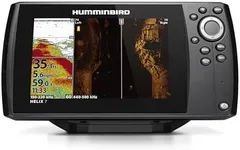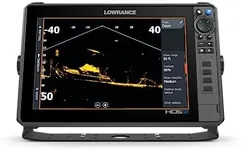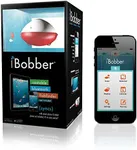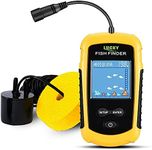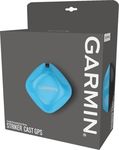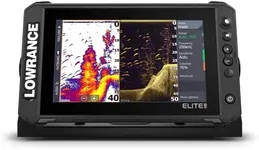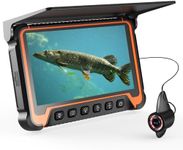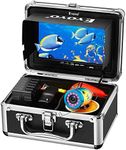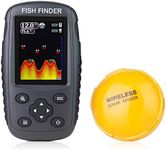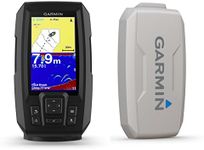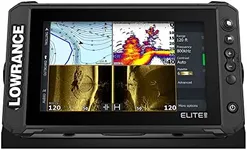Buying Guide for the Best Castable Fish Finder
Choosing the right castable fish finder can significantly enhance your fishing experience by helping you locate fish more efficiently. A castable fish finder is a portable device that you can cast into the water to get real-time data about fish location, water depth, and underwater structures. To make an informed decision, it's important to understand the key specifications and how they align with your fishing needs.Sonar TechnologySonar technology is the core of any fish finder, as it sends sound waves into the water and interprets the echoes to display underwater objects. This spec is crucial because it determines the accuracy and detail of the information you receive. There are two main types: single-beam and dual-beam. Single-beam sonar is simpler and usually sufficient for casual fishing, while dual-beam sonar provides more detailed and accurate readings, making it ideal for serious anglers who need precise information.
Depth RangeThe depth range indicates how deep the fish finder can scan underwater. This is important because it determines the types of water bodies you can effectively use the device in. Shallow water fish finders typically have a depth range of up to 100 feet, which is suitable for ponds, rivers, and small lakes. For deeper waters like large lakes or coastal areas, look for a depth range of 200 feet or more. Choose a depth range based on the typical fishing environments you frequent.
FrequencyFrequency refers to the number of sound waves the fish finder emits per second, measured in kilohertz (kHz). Higher frequencies (200 kHz and above) provide more detailed images and are better for shallow waters, while lower frequencies (50-83 kHz) penetrate deeper but offer less detail. If you fish in various environments, a fish finder with multiple frequency options can be very versatile, allowing you to switch based on your current needs.
ConnectivityConnectivity options, such as Bluetooth or Wi-Fi, allow the fish finder to connect to your smartphone or tablet. This is important for viewing and interpreting data on a larger screen and accessing additional features through apps. Bluetooth is generally sufficient for short-range connections, while Wi-Fi offers a more stable and longer-range connection. Consider how you plan to use the device and whether you need real-time data on your mobile device.
Battery LifeBattery life determines how long you can use the fish finder before needing to recharge it. This is crucial for long fishing trips where access to power may be limited. Shorter battery life (up to 5 hours) is fine for quick outings, while longer battery life (10 hours or more) is better for extended trips. Think about the duration of your typical fishing sessions and choose a fish finder with a battery life that matches your needs.
PortabilityPortability refers to the ease with which you can transport and use the fish finder. This is important for anglers who move around frequently or fish in various locations. Lightweight and compact models are easier to carry and cast, making them ideal for shore fishing or kayak fishing. If you often fish from a boat, a slightly larger model with more features might be acceptable. Consider how and where you fish to determine the right balance between portability and functionality.

